
As I promised, I will continue to introduce you to the most beautiful and lovely villages and towns of Provence in the Vaucluse department of France. This time my review will be about another beautiful town called Menerbes.
That day was a very busy day for us, as we planned to see a few small towns in the area at once. So, today my review will be dedicated to the city of Manerbes, where we ended the day after some visits to the small beautiful towns of Provence.

Like all the beautiful medieval towns (which are usually called villages here, although I have already said and will repeat, I personally don’t dare call them villages, since in my understanding it’s a little different), Menerbes is located in the Luberon natural park, which is extremely popular among tourists, because this is where the beautiful lavender fields of France are located.


Therefore, if you come here during the lavender blooming season, you can combine the beauty with the magnificent and picturesque towns of the Middle Ages.


About 1,100 people live in the town of Menerbes, so this town cannot be called small, or a village either. It’s so quiet here, everything is known in advance, and the illness of the local butcher is the most exciting event in six months. Part of local life, of course, is aimed at tourists - but since there are not so many of them, this part is small and does not particularly bother anyone.
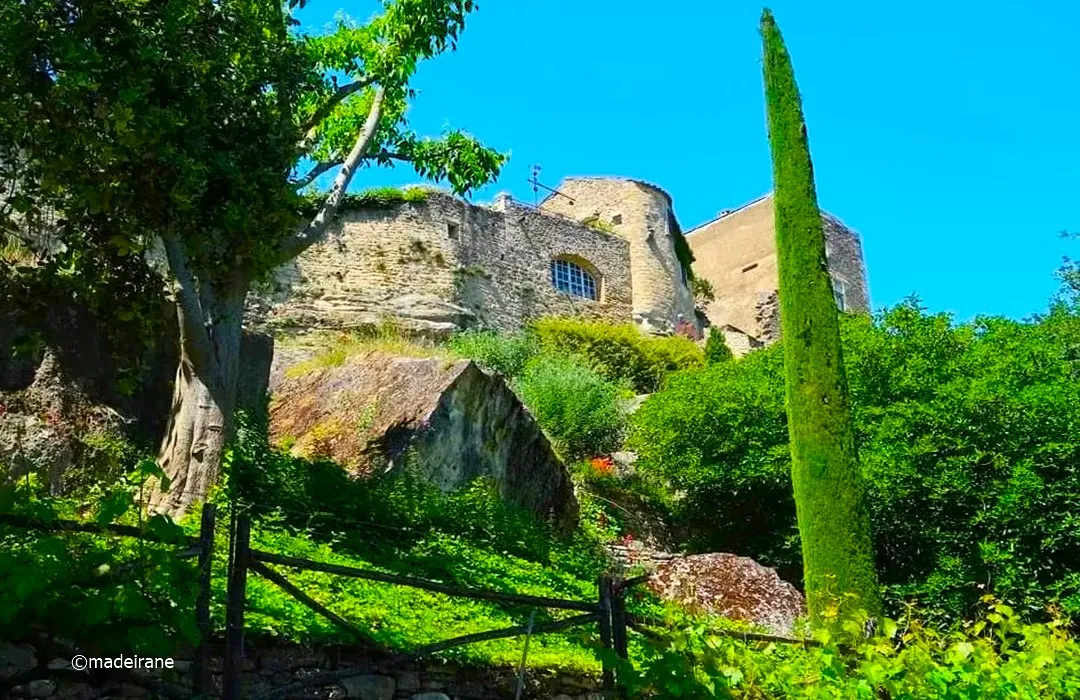
Like many other cities in this region that stood out in some way, this city also gained its popularity thanks to Peter Mayle, an English writer who lived here for a long time and wrote a very popular book “A Year in Provence” and a second book, “Provence Forever”. Peter Mayle himself, however, parted ways with his home in Menerbes: thanks to his own book, the writer’s favorite city became too noisy a place to live. He settled in a neighboring town, but his house is still considered a treasure here.
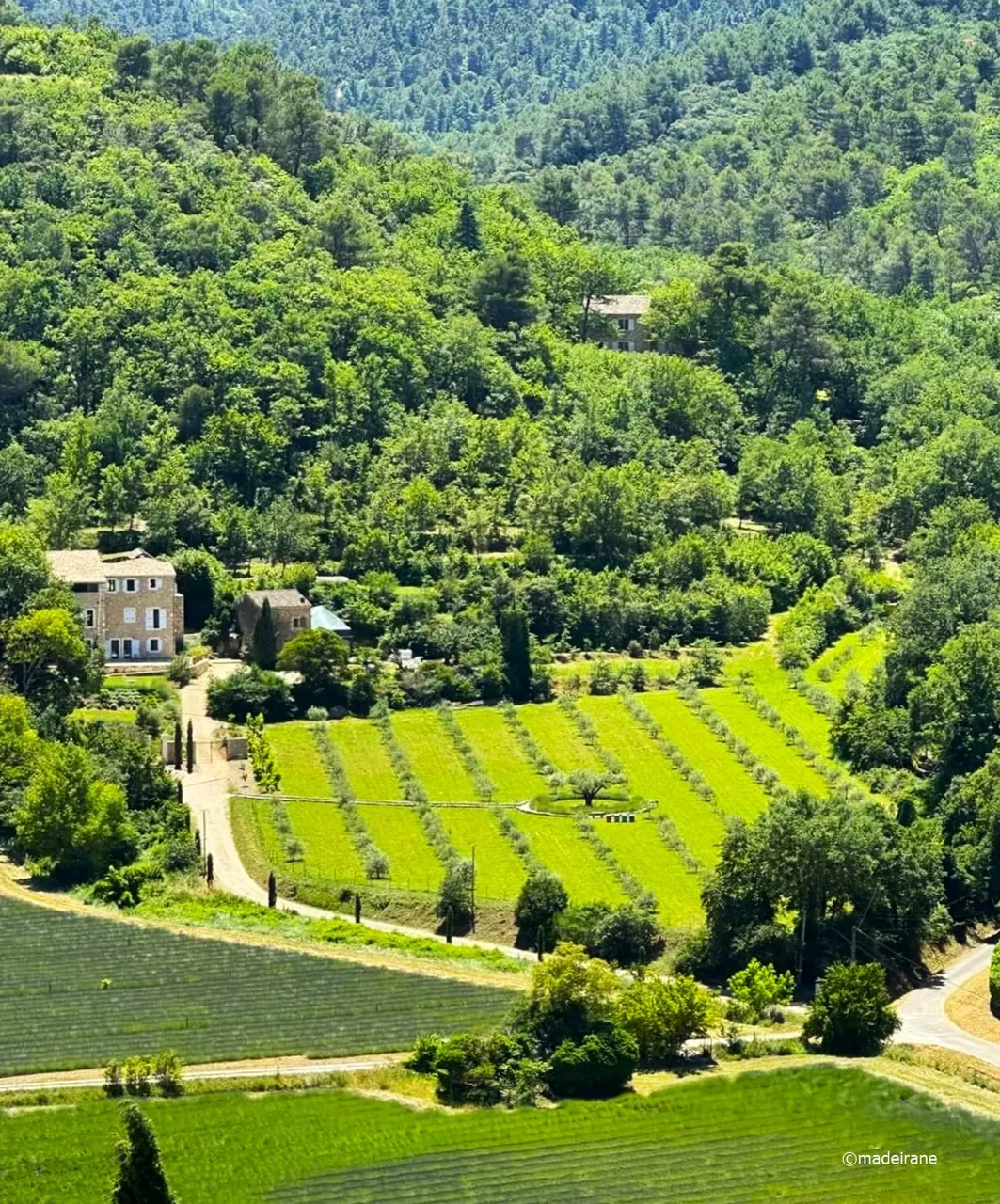
This town is also famous for the fact that Pablo Picasso visited it and even bought a house here, but later, when parting with his muse, Dora Maar gave it as a farewell gift. Therefore, this small and picturesque town, like many towns in this region, has always attracted creative people to this area and to cities that have retained their medieval image and spirit.
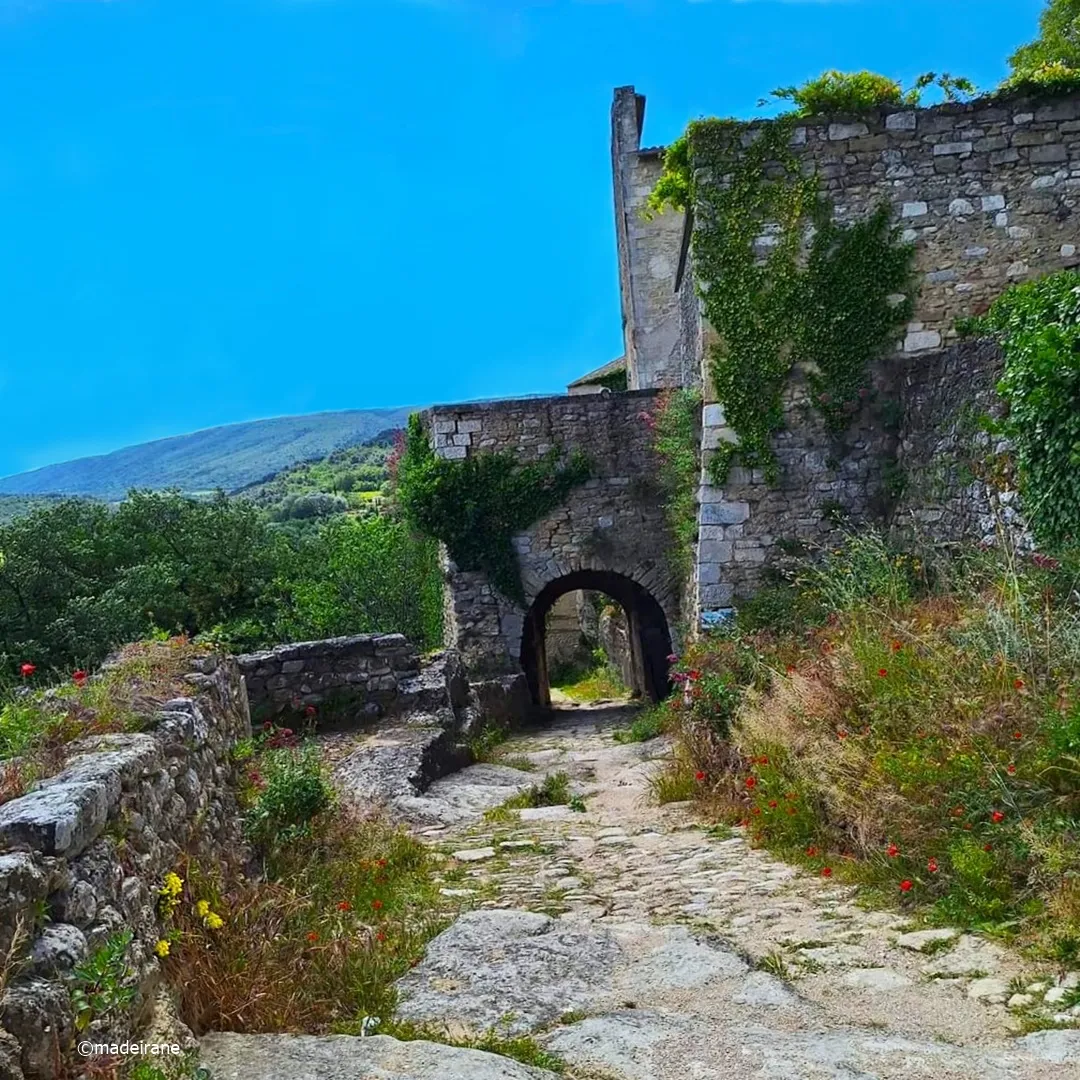
The city cannot boast of unique architectural and cultural sites, but almost every attraction in Menerbes and the surrounding area is a magnificent illustration of the truly Provençal style. Modern construction has practically not reached here, yet the village is perfectly preserved. This is a quiet and peaceful place by modern standards, while Menerbes is located at the intersection of different natural landscapes. Its landscapes are perhaps the most beautiful in Provence.
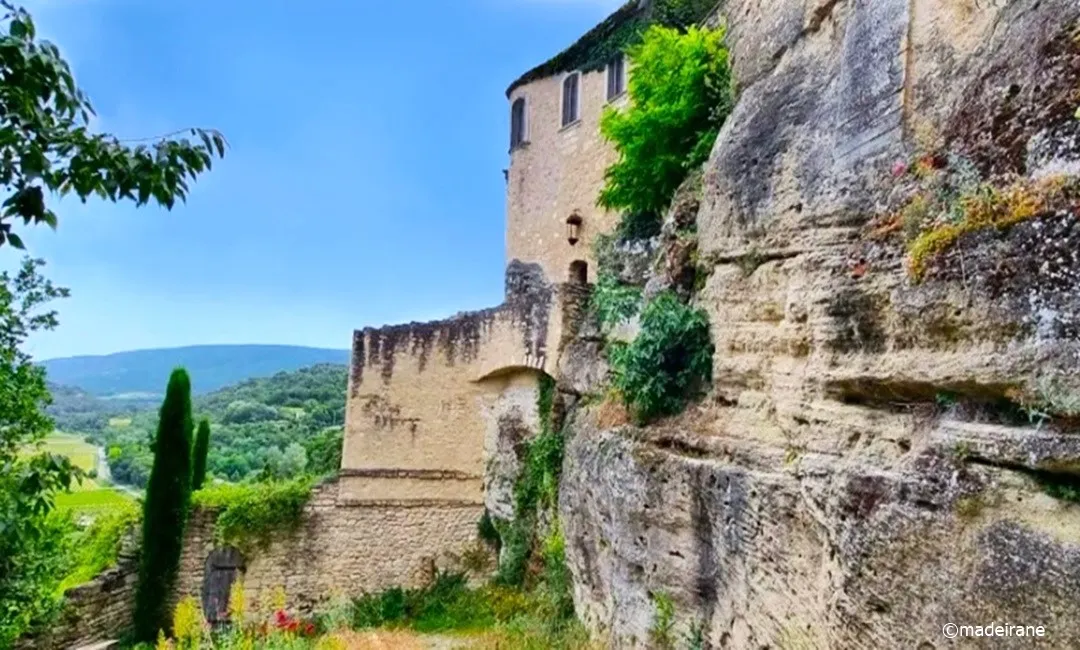
As for us, this was already the fourth similar city that we were in today, and we were already pretty tired of going up and then going back down. And yet, all the time, we felt some feeling of saturation already, and we wanted to see something different from these medieval towns. But our soul is so mysterious: when we were there, we were tired of similar landscapes, and when we left we started longing for those places.

And realizing this, we took our fatigue into our hands and decided that we would walk around the city as much as we could and look and enjoy these views. Moreover, even though all the towns are similar, they are so different and individual, each with its own atmosphere.

Like in all these towns that are located on the mountains, we climb up the winding streets. And the higher we rise, the narrower the streets become and the older the houses become.

But still, I must say that no matter what, this is a very nice French town in Provence, walking along its old streets is a pleasure.
It was here that the thought struck us that we should have to break up our trip into several days more, stay separately in these cute towns and spend the night here. But unfortunately, we had a long trip around Provence in a rental car, and we were running out of time.

It’s best to start the tour from the square near the city hall, lined with beautifully preserved houses from the 16th and 17th centuries. Several particularly large and rich estates have survived from the Middle Ages. The small city church of Saint-Luc is also worthy of attention - it was erected in the 12th century and decorated two centuries later. But I didn’t find much information on the historical part of this city on the Internet. That's why I'm showing you what we saw, but we can't always describe it. Since there is a huge disadvantage when you travel on your own, especially in such small towns.
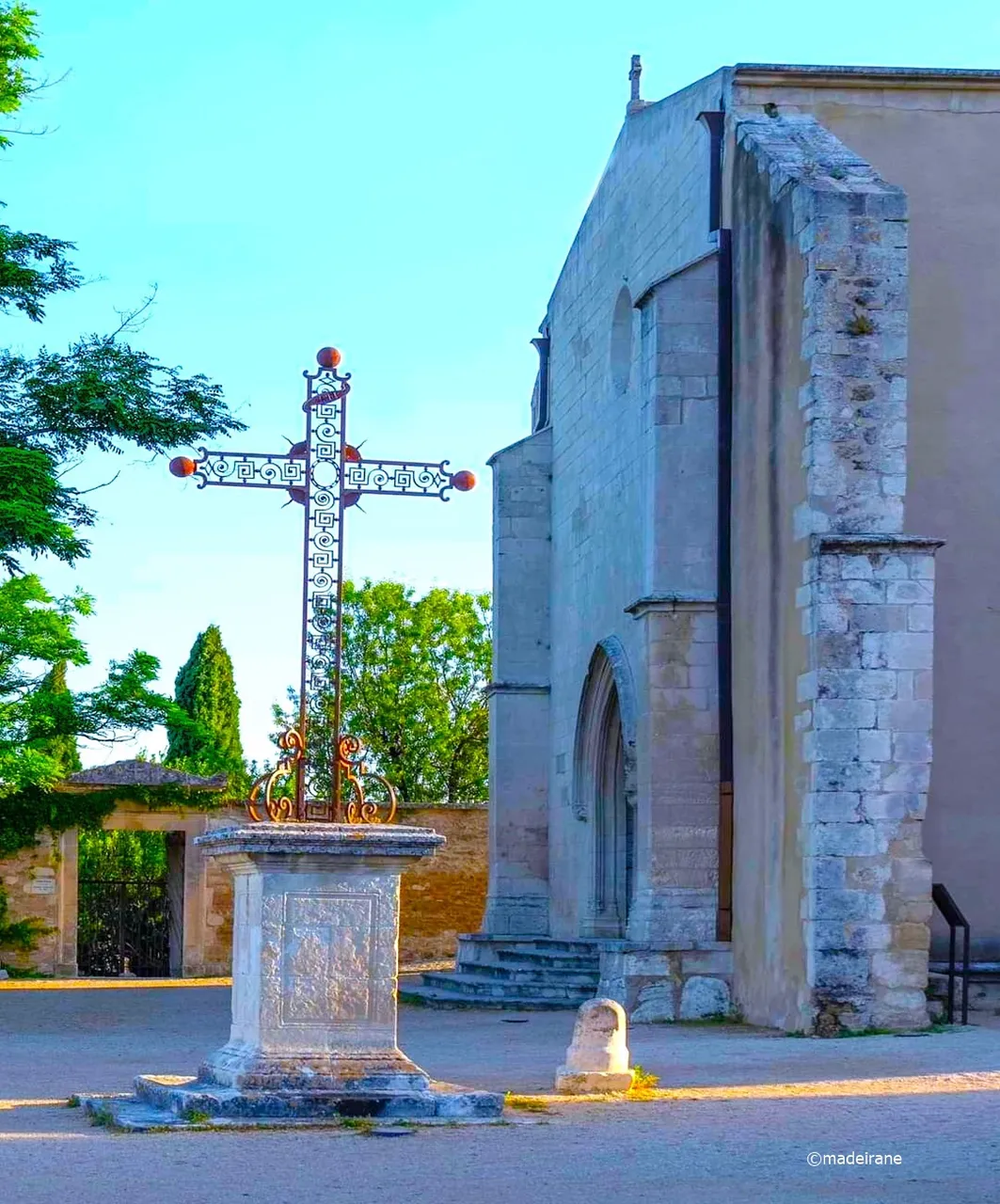
The massive city bell tower also dates back to the Middle Ages. In the old days, it served as a watchtower, and now it is one of the main tourist attractions - it offers stunning views of the city and the surrounding area.
In memory of the bloody era of the Reformation, a small castle (Le Castelet), built on the ruins of an older structure, and a citadel from the 13th century remain.


The history of this city, like neighboring Lacoste, is not very rosy. Since at one time, the city of Manerbes stood out from the general mass of Catholic cities and adopted Protestantism in the Middle Ages. Which angered all the Catholic cities around. But the city for a long time defended its right to another faith and, for five years, from 1573 to 1578, kept the city under siege by Catholics. And after five years, it had to give up. That is why the city with its fortress walls looks very impregnable.


And we, walking along the streets of this city, look at the wonderful decor and local cats.
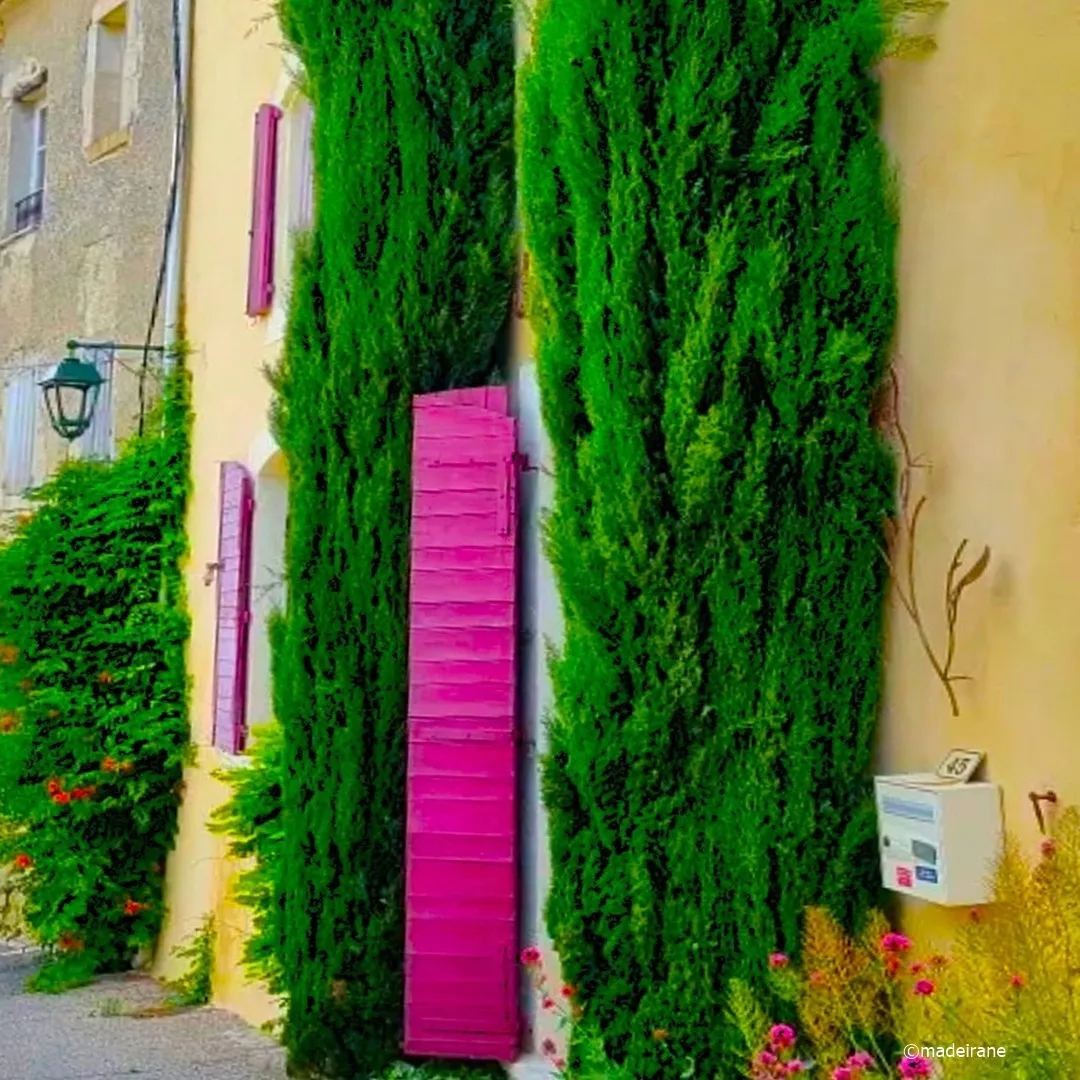

Of course, Manerbes is not as bright as the cities we visited, but it also has its own flavor. The calmness and tranquility that lives on these streets cannot be compared with anything.
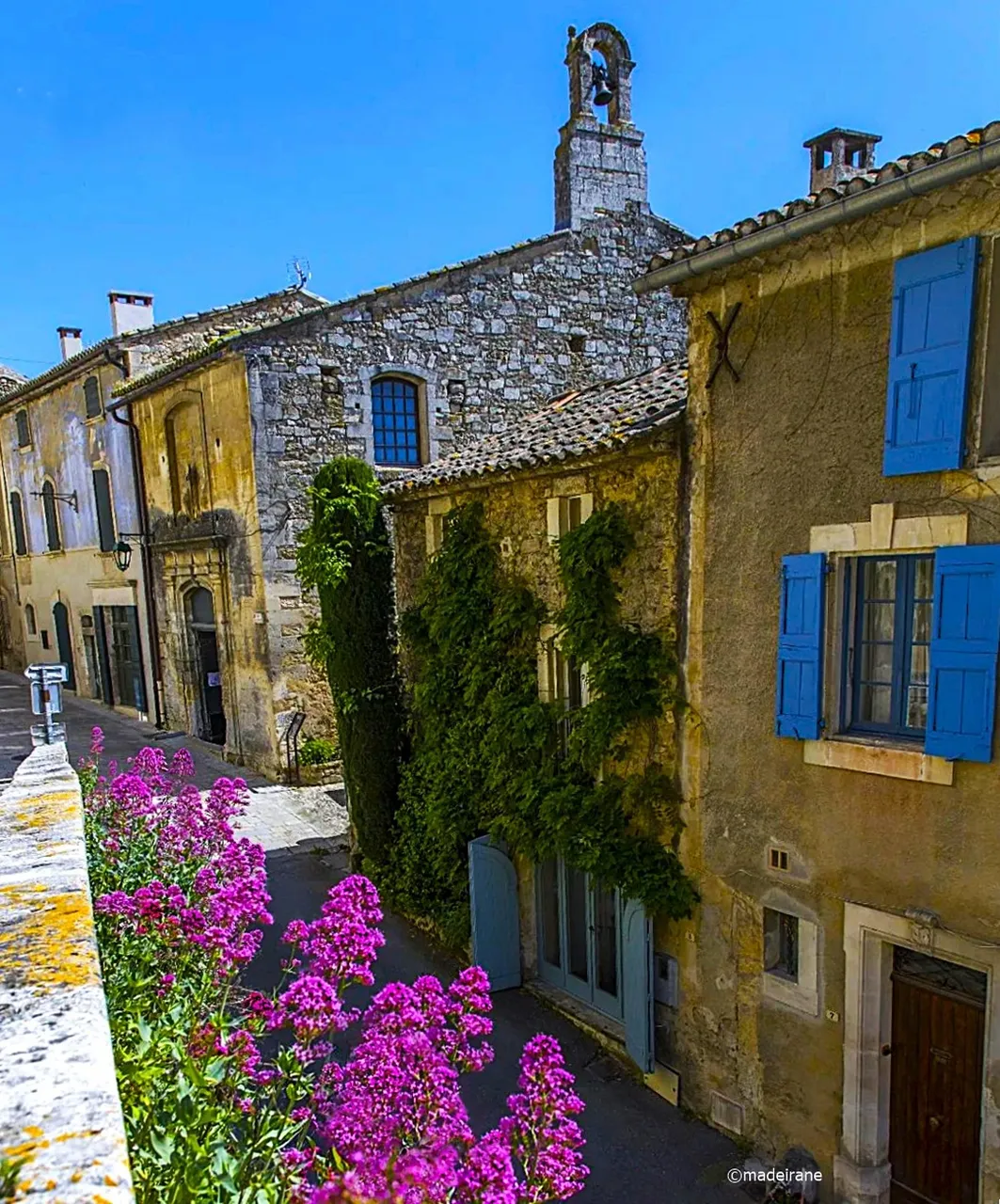
And there are wonderful views of the vineyards. Simply fabulously beautiful and no words are needed to describe this magnificence.

By the way, among interesting facts, in Menerbes there is a wine cork museum, which tells about the history of winemaking in this area. And in this museum there are more than 1000 corks. It’s good that we came here on foot, although we had already run out of energy, but driving a car along these narrow streets is almost impossible.
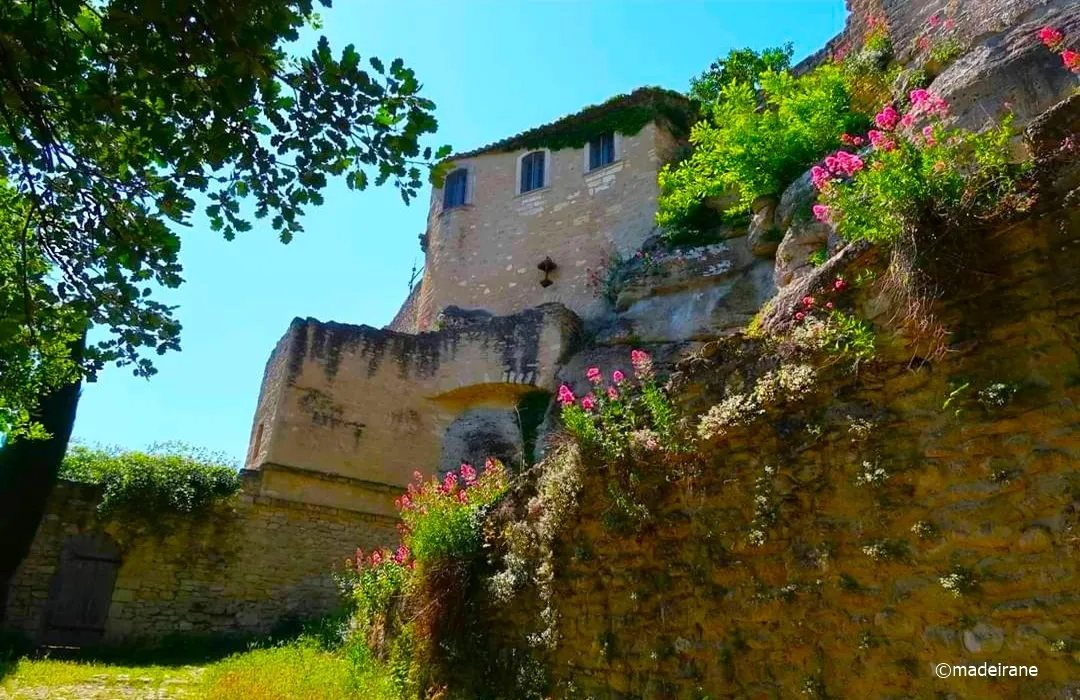
Meanwhile, we had already gone downstairs to our car and set off further on our journey. After all, despite our fatigue, we left the city of Menerbes satisfied, and rest and a new city lay ahead of us, so we went to our hotel in Cavaillon to collapse into bed. Because it was a busy and very interesting day. See three cities in a day, where there was not a single kilometer up and down.
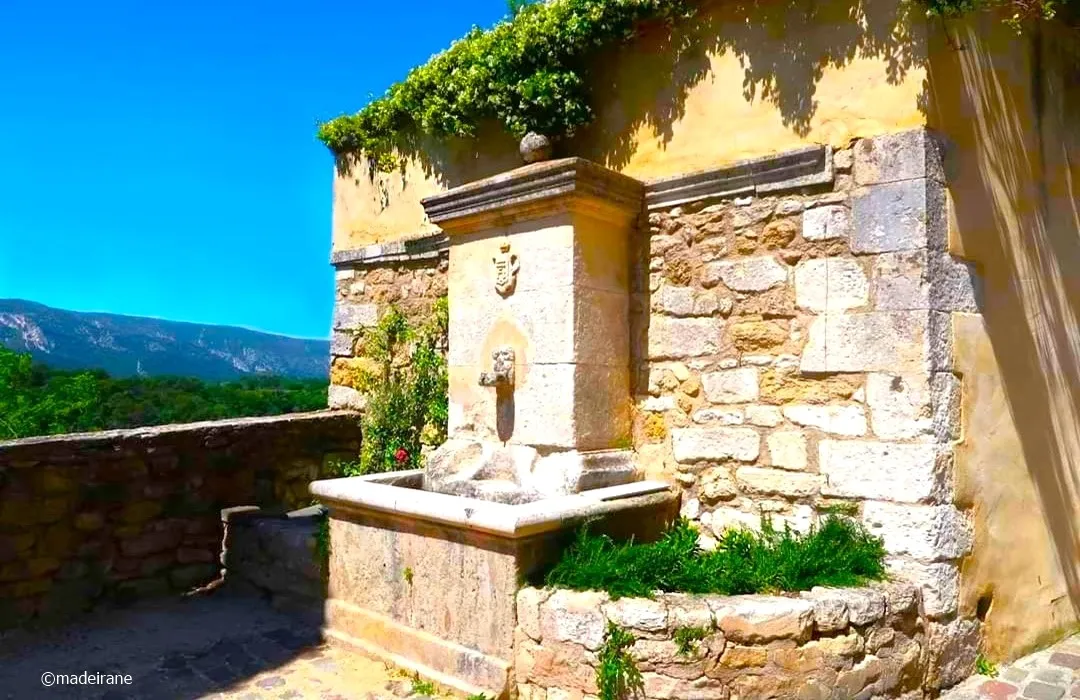

Menerbes is, of course, simpler and not as memorable as previous cities, but it is still worth your attention to visit it. It's nice to see the quiet everyday life of a small town with your own eyes.

💝💝💝💝💝💝💝💝💝💝
With love, @madeirane
Photos are taken by me.
© 2024
Translated from Lithuanian with DeepL.com (free version).
Kaip ir žadėjau, toliau supažindinsiu jus su gražiausiais ir mieliausiais Provanso kaimais ir miesteliais Prancūzijos Voklizo departamente. Šį kartą mano apžvalga bus apie dar vieną gražų miestelį, vadinamą Menerbes.
Ši diena mums buvo labai įtempta, nes planavome apžiūrėti iš karto kelis šios vietovės miestelius. Taigi šiandien mano apžvalga bus skirta Menerbes miestui, kuriame baigėme dieną po kelių apsilankymų mažuose gražiuose Provanso miesteliuose.
Kaip ir visi gražūs viduramžių miesteliai (kurie čia paprastai vadinami kaimais, nors jau sakiau ir pasikartosiu, asmeniškai nedrįstu jų vadinti kaimais, nes, mano supratimu, tai šiek tiek kitaip), Menerbes yra Luberono gamtos parke, kuris yra labai populiarus tarp turistų, nes būtent čia yra nuostabūs Prancūzijos levandų laukai.
Todėl jei atvyksite čia levandų žydėjimo sezono metu, galėsite derinti jų grožį su didingais ir vaizdingais viduramžių miesteliais.
Menerbes miestelyje gyvena apie 1100 žmonių, todėl šio miestelio negalima vadinti nei mažu, nei kaimu. Čia taip ramu, viskas žinoma iš anksto, o vietinio mėsininko liga yra įdomiausias įvykis per pusmetį. Dalis vietinio gyvenimo, žinoma, skirta turistams - bet kadangi jų nėra daug, ši dalis yra nedidelė ir niekam ypatingai netrukdo.
Kaip ir daugelis kitų kuo nors išsiskiriančių šio regiono miestų, šis miestas taip pat išpopuliarėjo dėka anglų rašytojo Peterio Mayle'o, kuris ilgą laiką čia gyveno ir parašė labai populiarią knygą "Metai Provanse" bei antrąją knygą "Provanso amžinai". Tačiau pats Peteris Mayle'as išsiskyrė su savo namais Menerbes: dėl jo paties knygos rašytojo mėgstamas miestas tapo pernelyg triukšminga vieta gyventi. Jis apsigyveno gretimame miestelyje, tačiau jo namas čia iki šiol laikomas lobiu.
Šis miestelis garsus ir tuo, kad jame lankėsi Pablas Pikaso ir net nusipirko čia namą, tačiau vėliau, atsisveikindamas su savo mūza Dora Maar, padovanojo jį kaip atsisveikinimo dovaną. Todėl šis nedidelis ir vaizdingas miestelis, kaip ir daugelis šio regiono miestų, visada traukė kūrybingus žmones į šį kraštą ir į miestus, išsaugojusius viduramžių įvaizdį ir dvasią.
Miestas negali pasigirti unikaliais architektūros ir kultūros objektais, tačiau beveik kiekvienas Menerbes ir jo apylinkių lankytinas objektas yra puiki tikro Provanso stiliaus iliustracija. Šiuolaikinė statyba čia praktiškai nepasiekė, tačiau kaimas puikiai išlikęs. Pagal šiuolaikinius standartus tai tyli ir rami vieta, o Menerbes įsikūręs skirtingų gamtinių kraštovaizdžių sankirtoje. Jo kraštovaizdžiai yra bene gražiausi Provanse.
Mums tai buvo jau ketvirtas panašus miestas, kuriame šiandien buvome, ir jau buvome gerokai pavargę nuo kėlimosi į viršų ir grįžimo atgal. Ir vis dėlto visą laiką jautėme tam tikrą persisotinimo jausmą ir norėjome pamatyti kažką kitokio šiuose viduramžių miestuose. Bet mūsų siela tokia paslaptinga: kai buvome ten, buvome pavargę nuo panašių kraštovaizdžių, o kai išvažiavome, ėmėme ilgėtis tų vietų.
Tai supratę, paėmėme nuovargį į savo rankas ir nusprendėme, kad vaikščiosime po miestą, kiek galėsime, ir žiūrėsime bei mėgausimės tais vaizdais. Be to, nors visi miesteliai panašūs, jie tokie skirtingi ir individualūs, kiekvienas turi savo atmosferą.
Kaip ir visuose šiuose miestuose, įsikūrusiuose ant kalnų, mes kopėme aukštyn vingiuotomis gatvelėmis. Ir kuo aukščiau kylame, tuo siauresnės darosi gatvės ir senesni namai.
Deja, mums nepasisekė su saule, nes atvykome vėlai vakare ir ji jau leidosi. Dėl to daugelis nuotraukų atrodė niūriai. Arba ant miesto kritęs šešėlis trukdė padaryti geras nuotraukas. Nuo to, žinoma, šio senamiesčio grožis mūsų jausmuose šiek tiek nublanko.
Bet vis dėlto turiu pasakyti, kad, kad ir kas bebūtų, tai labai gražus Prancūzijos miestelis Provanse, vaikščioti jo senomis gatvelėmis - vienas malonumas.
Būtent čia mums kilo mintis, kad turėtume savo kelionę išskaidyti į kelias dienas, apsistoti atskirai šiuose mieluose miesteliuose ir čia nakvoti. Bet, deja, mūsų laukė ilga kelionė po Provansą išsinuomotu automobiliu, o laiko vis trūko.
Ekskursiją geriausia pradėti nuo aikštės prie rotušės, kurioje stovi gražiai išlikę XVI ir XVII a. namai. Keletas ypač didelių ir turtingų dvarų išliko nuo viduramžių. Dėmesio verta ir nedidelė miesto Saint-Luc bažnyčia, pastatyta XII a., o papuošta dviem šimtmečiais vėliau. Tačiau internete neradau daug informacijos apie istorinę šio miesto dalį. Todėl rodau jums tai, ką matėme, bet ne visada galime tai aprašyti. Kadangi yra didžiulis trūkumas, kai keliaujate vienas, ypač tokiuose mažuose miesteliuose.
Masyvi miesto varpinė taip pat mena viduramžius. Seniau jis tarnavo kaip sargybos bokštas, o dabar yra vienas pagrindinių turistų traukos objektų - iš jo atsiveria nuostabūs miesto ir apylinkių vaizdai.
Kruvinai reformacijos epochai atminti išliko nedidelė pilis (Le Castelet), pastatyta ant senesnio statinio griuvėsių, ir XIII a. citadelė.
Šio miesto, kaip ir kaimyninio Lacoste, istorija nėra labai rožinė. Mat vienu metu Manerbes miestas išsiskyrė iš bendros katalikiškų miestų masės ir viduramžiais priėmė protestantizmą. Tai papiktino visus aplinkinius katalikiškus miestus. Tačiau miestas ilgai gynė savo teisę į kitą tikėjimą ir penkerius metus, nuo 1573 iki 1578 m., laikė katalikų apgultį. O po penkerių metų turėjo pasiduoti. Štai kodėl miestas su savo tvirtovės sienomis atrodo labai neįveikiamas.
O mes, vaikščiodami šio miesto gatvėmis, žvelgiame į nuostabų dekorą ir vietines kates.
Žinoma, Manerbes nėra toks ryškus kaip mūsų aplankyti miestai, bet ir jis turi savo skonį. Šiose gatvėse tvyrančios ramybės ir tylos negalima palyginti su niekuo.
O iš čia atsiveria nuostabūs vaizdai į vynuogynus. Tiesiog pasakiškai gražu ir šiai didybei apibūdinti nereikia jokių žodžių.
Beje, be kitų įdomių faktų, Menerbes yra vyno kamštelių muziejus, kuriame pasakojama apie šios vietovės vyndarystės istoriją. Šiame muziejuje yra daugiau nei 1000 kamštelių.
Gerai, kad čia atėjome pėsčiomis, nors jėgų jau pritrūko, bet važiuoti automobiliu šiomis siauromis gatvelėmis beveik neįmanoma.
Tuo tarpu mes jau buvome nusileidę į savo automobilį ir leidomės į tolesnę kelionę. Galų gale, nepaisant nuovargio, Menerbo miestą palikome patenkinti, o mūsų laukė poilsis ir naujas miestas, todėl nuvykome į savo viešbutį Kavailjone ir sugulėme į lovą. Nes tai buvo įtempta ir labai įdomi diena. Per dieną pamatyti trys miestai, kuriuose nebuvo nė vieno kilometro aukštyn ir žemyn.
Menerbes, žinoma, paprastesnis ir ne toks įsimintinas kaip ankstesni miestai, bet vis tiek verta jį aplankyti. Malonu savo akimis pamatyti ramią mažo miestelio kasdienybę.